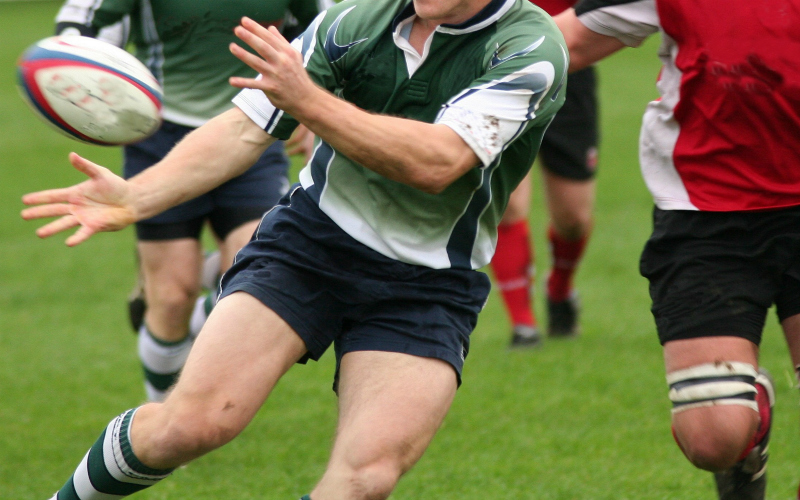
I previously commented on legal claims brought by former professional rugby players, including former Wales Captain Ryan Jones and former England world cup winner Steve Thompson against the sports’ governing bodies, World Rugby and their respective national governing bodies, the Rugby Football Union and the Welsh Rugby Union. They allege, essentially, that by failing to take reasonable action to protect players against head injuries, the bodies breached their duty of care to players and caused the permanent injuries from which they are now suffering from. Similar actions are ongoing against Rugby League’s governing bodies on behalf of former players of that discipline.
These claims have been brought in England, under English law. There remain no widely reported cases by players of the same generation in Scotland against the Scottish Rugby Union (SRU) . However, in the last few days it has been reported that the family of a sadly deceased Scotland player, Siobhan Cattigan have brought a separate action against the SRU and World Rugby.
Under Scots law, Siobhan’s direct family are potentially entitled to seek compensation for the loss of loved one, referred to generally as loss of society, and the executors of her estate, for pain and suffering she experienced prior to passing away, referred to as transmissible solatium.
Siobhan played for Scotland Ladies between 2018 and 2021. She tragically died in November 2021. It is alleged she sustained brain injuries from playing rugby, which caused a deterioration in her health and ultimately lead to her death. The case against the SRU and World Rugby is on a similar basis to the claims brought south of the border by Jones etc. It will also be argued that there was a failure to follow protocols in place to deal with head injuries and after care. A key difference in Siobhan’s case is that, in the modern game, there are more clearly established protocols that ought to be followed during play and in assessing players return to play following a head injury.
Anyone interested in rugby over the last few years will have seen changes brought in to address player safety. The cases of former players, such as Jones, who played before the introduction of much of these changes will argue that the governing bodies ought to have put measures in place because they knew or ought to have known of the risks to players at that time. That is, in my view, a harder argument than what must be made by the Cattigan family and any recent cases, given that the risk of head injury is now so well-known and strict protocols are to be followed. If it can be shown that these protocols were not followed and the opinion of medical experts is that, had they been followed, her injuries might have been avoided, then a case can succeed.
My personal view on such cases is perhaps influenced more by my personal injury background than my (extremely amateur) rugby background. There is no question in my mind that if it can be established that the governing bodies didn’t do enough and the players have sustained injury as a result, then they are entitled to compensation. Compensation must reflect the extent of their injuries and the impact on their lives, which is extreme in some cases.
Proving that will not be straight forward, but the questions being asked are ones that must be asked. The issues Jones, Thompson and their cohort are experiencing are tragic. Those players are entitled to know if more could have been done. Siobhan Cattigan’s case shows that this is not just an issue of the past. Perfecting and enforcing protocols for current players must be prioritised above all else, at every level of the game, especially at the highest level where the risks to players are so great.
There are arguments that further changes will hamper the game, but what will happen to the game if these cases keep occurring? How might the game improve where players can play free from such risk of head injuries? What might players with careers cut short by head injuries have achieved? What future stars might be attracted to a game that values player safety above all else and how many are lost because of the current risk of playing?
Those reluctant to apportion blame to governing bodies because rugby is “always going to be a dangerous game” must look at examples outside of rugby, and even sport. In what other professions would such risk be acceptable? How much safer is construction work, and other seemingly inherently dangerous jobs, following the introduction of strict Health and Safety Regulation in recent decades? These changes were brought about, at least in part, because individuals brought actions and proved that their employers could and should be doing more to protect them. Legislation followed to set the standards.
Football faces similar questions to Rugby. I previously commented that the Scottish Parliament’s consideration as to whether brain injuries in sport ought to be considered an industrial injury should extend to rugby as well as football. The outcome of the Scottish Parliamentary Working Group looking at this is still awaited. However, governing bodies have the power to put in place real change now. If such actions achieve no more than that; they will have been justified.
Daniel McGinn is an Associate in our specialist Personal Injury team. For further information please contact Daniel on 01382 346207, email dmcginn@thorntons-law.co.uk or call the Personal Injury team on 0800 731 8434.
